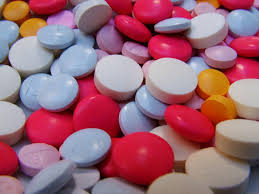Symptom Finder - Rectal Pain
RECTAL PAIN
Practically the whole specialty of proctology is devoted to taking care of patients with rectal pain. To develop the differential diagnosis it is useful first to divide the conditions into extrinsic and intrinsic. To recall the extrinsic causes, one simply visualizes the structures around the rectum.
Noting the tubes and ovaries, one considers salpingitis, ovarian cysts, and ectopic pregnancy. Visualize the coccyx, and coccydynia is brought to mind. Just as important a cause of rectal pain is prostatitis or prostatic abscess. A pelvic appendix or ruptured diverticulum may inflame the rectum extrinsically.
Intrinsic causes are developed by the mnemonic VINDICATE.
V—Vascular conditions suggest hemorrhoids.
I—Inflammation suggests proctitis, anal ulcers, and perirectal abscess.
N—Neoplasms are not usually painful until the advanced stage of disease.
D—Degenerative disorders are suggested, but there are no degenerative diseases causing rectal pain.
I—Intoxication includes overuse of suppositories and phenylephrine HCl (Preparation H). An idiopathic condition to be considered here is proctalgia fugax.
C—Congenital and acquired malformations suggest fistula in ano, infected pilonidal cyst, diverticulum, and intussusception.
A—Autoimmune diseases suggest ulcerative proctitis and granulomatous colitis.
T—Trauma should bring to mind fecal impactions and foreign bodies or introduction of the male organ into the rectum.
E—Endocrine disorders suggest nothing other than the ovarian cysts and ectopic pregnancy already mentioned.
Approach to the Diagnosis
The cause of rectal pain is usually obvious on examination with an anoscope or proctoscope. Careful palpation may be necessary to discover a perirectal abscess, coccydynia, or an ectopic pregnancy. Anal fissures may be missed unless all quadrants of the anus are examined with the slit anoscope. Lateral anal fissures (3 o’clock or 9 o’clock) suggest syphilis, tuberculosis, or other serious underlying causes.
Other Useful Tests
1. Proctology consult
2. Sigmoidoscopy (rectal carcinoma)
3. Stool culture (proctitis)
4. Barium enema (Crohn disease, ulcerative colitis)
5. Frei test (lymphogranuloma venereum)
6. Prostatic massage and examination of the exudate (proctitis)
7. Urine culture and colony count
724
8. X-ray of lumbar spine (cauda equina syndrome, coccydynia)
9. HIV antibody titer (AIDS)
10. Gallium scan (perirectal abscess)
11. Pregnancy test
12. Pelvic sonogram (ectopic pregnancy)
13. Sedimentation rate (pelvic inflammatory disease [PID])
Practically the whole specialty of proctology is devoted to taking care of patients with rectal pain. To develop the differential diagnosis it is useful first to divide the conditions into extrinsic and intrinsic. To recall the extrinsic causes, one simply visualizes the structures around the rectum.
Noting the tubes and ovaries, one considers salpingitis, ovarian cysts, and ectopic pregnancy. Visualize the coccyx, and coccydynia is brought to mind. Just as important a cause of rectal pain is prostatitis or prostatic abscess. A pelvic appendix or ruptured diverticulum may inflame the rectum extrinsically.
Intrinsic causes are developed by the mnemonic VINDICATE.
V—Vascular conditions suggest hemorrhoids.
I—Inflammation suggests proctitis, anal ulcers, and perirectal abscess.
N—Neoplasms are not usually painful until the advanced stage of disease.
D—Degenerative disorders are suggested, but there are no degenerative diseases causing rectal pain.
I—Intoxication includes overuse of suppositories and phenylephrine HCl (Preparation H). An idiopathic condition to be considered here is proctalgia fugax.
C—Congenital and acquired malformations suggest fistula in ano, infected pilonidal cyst, diverticulum, and intussusception.
A—Autoimmune diseases suggest ulcerative proctitis and granulomatous colitis.
T—Trauma should bring to mind fecal impactions and foreign bodies or introduction of the male organ into the rectum.
E—Endocrine disorders suggest nothing other than the ovarian cysts and ectopic pregnancy already mentioned.
Approach to the Diagnosis
The cause of rectal pain is usually obvious on examination with an anoscope or proctoscope. Careful palpation may be necessary to discover a perirectal abscess, coccydynia, or an ectopic pregnancy. Anal fissures may be missed unless all quadrants of the anus are examined with the slit anoscope. Lateral anal fissures (3 o’clock or 9 o’clock) suggest syphilis, tuberculosis, or other serious underlying causes.
Other Useful Tests
1. Proctology consult
2. Sigmoidoscopy (rectal carcinoma)
3. Stool culture (proctitis)
4. Barium enema (Crohn disease, ulcerative colitis)
5. Frei test (lymphogranuloma venereum)
6. Prostatic massage and examination of the exudate (proctitis)
7. Urine culture and colony count
724
8. X-ray of lumbar spine (cauda equina syndrome, coccydynia)
9. HIV antibody titer (AIDS)
10. Gallium scan (perirectal abscess)
11. Pregnancy test
12. Pelvic sonogram (ectopic pregnancy)
13. Sedimentation rate (pelvic inflammatory disease [PID])

